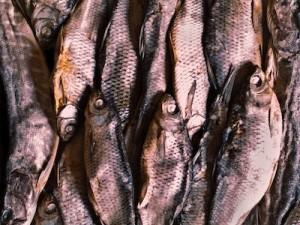 California – What experts and analysts have feared for months has finally happened: radiation from Japan’s Fukushima tsunami damaged eco-power plants has begun to make its way into the food chain off the western coast of the United States.
California – What experts and analysts have feared for months has finally happened: radiation from Japan’s Fukushima tsunami damaged eco-power plants has begun to make its way into the food chain off the western coast of the United States.
Trace amounts of the radioactive elements cesium-137 and cesium-134 released after the devastating tsunami damaged at least three reactors along Japan’s northeastern coast in March 2011, have been discovered in at least 15 tuna recently caught off the coast of California.
According to Reuters, the Bluefin Tuna examined may have carried irradiation across the Pacific Ocean faster than water or wind would’ve been able to. According to data published in the journal Proceedings of the National Academy of Sciences, the levels of cesium found in the fish so far are not elevated enough to cause harm to humans if consumed.
Daniel Madigan of Stanford University’s Hopkins Marine Station says the amounts of radiation detected in the tuna falls far below Japan’s safety limit. “I wouldn’t tell anyone what’s safe to eat or what’s not safe to eat,” Madigan told Reuters. “It’s become clear that some people feel that any amount of radioactivity, in their minds, is bad and they’d like to avoid it. But compared to what’s there naturally […] and what’s established as safety limits, it’s not a large amount at all.”
Madigan said researchers found elevated levels of two radioactive isotopes of the cesium element, 137 – which was present in the eastern Pacific before the disaster at Fukushima Daiichi – and 134, which is caused only by manmade activities and wasn’t present before the tsunami smashed into the plant.
Because cesium 134 only exists due to human activity, such as the manufacture of nuclear weapons and nuclear power plants, Madigan’s team determined the 134 they were measuring had to have come from Fukushima.
“There was about five times the background amount of cesium 137 in the Bluefin tuna they tested, but that is still a tiny quantity, Madigan said: 5 becquerels instead of 1 becquerel (It takes 37 billion becquerels to equal 1 curie; for context, a pound of uranium-238 has 0.00015 curies of radioactivity, so one becquerel would be a truly minuscule proportion),” reports Reuters.
When it comes to radiation contamination, the real question is how much is too much? Bluefin tuna only spawn off the coast of Japan and the Philippines. Based on normal tuna migration patterns across the Pacific Ocean, researchers are certain that the elevated radioactive isotopes came from the Fukushima plant.
Based on the size of the tuna examined (about 15 pounds), researchers believe the fish left the waters off Japan somewhere around a month after the accident. The majority of the radiation from the damaged plant was released for just a few days in April 2011. Unlike other compounds, radioactive cesium does not sink quickly but instead remains dispersed from the ocean’s surface to the seafloor. Because of this fish swim through it and ingest it through their gills.
Madigan said Bluefin tuna off Japan’s coast soon after the accident probably had much higher levels of cesium 134 present in their bodies, perhaps as much as 40-50 percent more than normal. Even though the levels of radioactive contamination showing up off the nation’s coastline is relatively low, Madigan said they are still cause for concern. Mainly because, as he put it, it is difficult to determine what levels of contamination in our food are ultimately dangerous enough to cause harm.
 Off The Grid News Better Ideas For Off The Grid Living
Off The Grid News Better Ideas For Off The Grid Living



